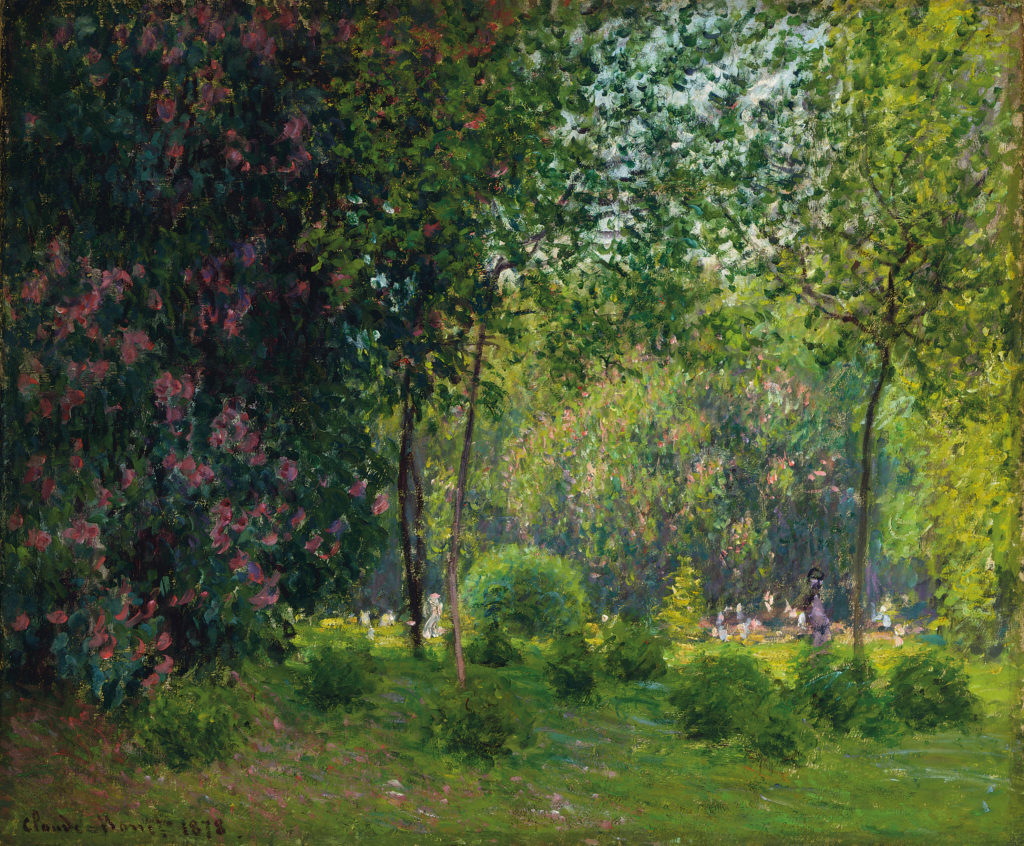
How much do artist’s paint their feelings as well as what they see? It’s a question we rarely ask ourselves when we go to an exhibition celebrating someone’s artistic talent and accomplishments. Thinking about how that question might be answered could help us appreciate both the artist and art even more.
Claude Monet was one of those rare artists whose long career, tremendous prowess and prolific output made him wealthy. These days, most of us don’t think of him as a rebel. A regenade who resisted convention by painting in a style more suited to the way he wanted his paintings to communicate. Nor do we spend much time wondering how he might have felt about what he created. When he originally began presenting his works in Paris, his art was far enough out of the mainstream that he didn’t show his paintings in salons, the conventional venues for introducing artists to the public. There, your paintings would be scrutinized by prominent art authorities of the day who would pass judgment on what they saw. Favor often depended on the conscious adherence to specific artistic standards of the day. Monet and others like him who followed less restrictive muses, showed their work in storefronts and private homes.
Because their paintings took new approaches with color and light and avoided the hard lines of precise detail, the description applied to their work, impressionism, was intended as a slight. With their use of unconventional brush strokes and bright, often synthetic, colors; artists like Monet weren’t following the rules. Even what they chose to paint was different. Rather than commemorating historical scenes of battles and events, impressionists often painted the natural world; with or without people in the compositions. By applying color in small strokes and not blending them with a brush, colors would come together or “blend optically rather than literally”. The effect was to give paintings a hazy soothing softness. By reinterpreting reality through this method, impressionists were enhancing its beauty and introducing a new aesthetic.
We can be grateful to the Art Institute for extending its current Monet and Chicago show through June 14. Originally scheduled to leave in January, we now have a few more months to reacquaint ourselves with the reasons why Monet’s paintings continue to enthrall the world more than 100 years after they were completed.

Filling eight of the museums galleries, Monet and Chicago also gives a nod to the Chicago elite who, at the turn of the 20th century, aggressively championed and collected his work. The influence of the Coburns, Palmers and Ryersons helped cultivate a citywide fascination and appreciation for the artist that continues to thrive today.
Monet once said his artistic life was a “perpetual search for appealing subjects”. And if he found something particularly pleasing, he’d paint it again and again using different light or a change in perspective to give it a new temperament. The Park Monceau, the town of Vétheuil where he once lived, the Normandy coast and those glorious waterlilies he painted at the latter part of his life are examples. With over 2500 paintings and drawing attributed to him, the constancy of that search made Monet one of the most productive artists of his day. Monet and Chicago boasts many of his most splendid works and gives them context by arranging them in a chronological progression. To highlight how the character of a painting can be altered with light and color, it also presents pieces that share similarities of place or theme together; making it much easier to see how intuitively he chose to distinguish each from the other.
Even though Monet exhibitions have been successful mainstays at the Art Institute for years, each show seems to disclose something that feels new and reminds us of why Monet’s unique artistic vision seems so timeless. In this exhibition, it was his 1883 Dahlia’s that exploded with such surprising beauty as well as the show’s representation of his still life paintings. The artist’s choices of placement, light, color, mood and texture combine to create focused worlds of perfection.
It was once again among the water lilies that the culmination of Monet’s mastery could be found. He was nearly in his seventies when he began painting his cherished gardens and lily pond. By the time he had died, he’d painted more than 100 canvases and mounted a highly successful show featuring them. Some are quietly sublime. Others possess a beauty that can only be called powerful; majestic in the way they fill the eye. These are the paintings that he bonded with and, for most of them, could not bring himself to offer up for sale. For Monet, did they represent the pinnacles of his artistic virtuosity or did they most reflect how he felt about painting what seems to be his favorite subject, the intrinsic beauty of the natural world? It’s a question that enhances the pleasures of Monet and Chicago.
Monet and Chicago
Through June 14, 2021
The Art Institute of Chicago
111 S. Michigan Ave.
Chicago, IL 60603